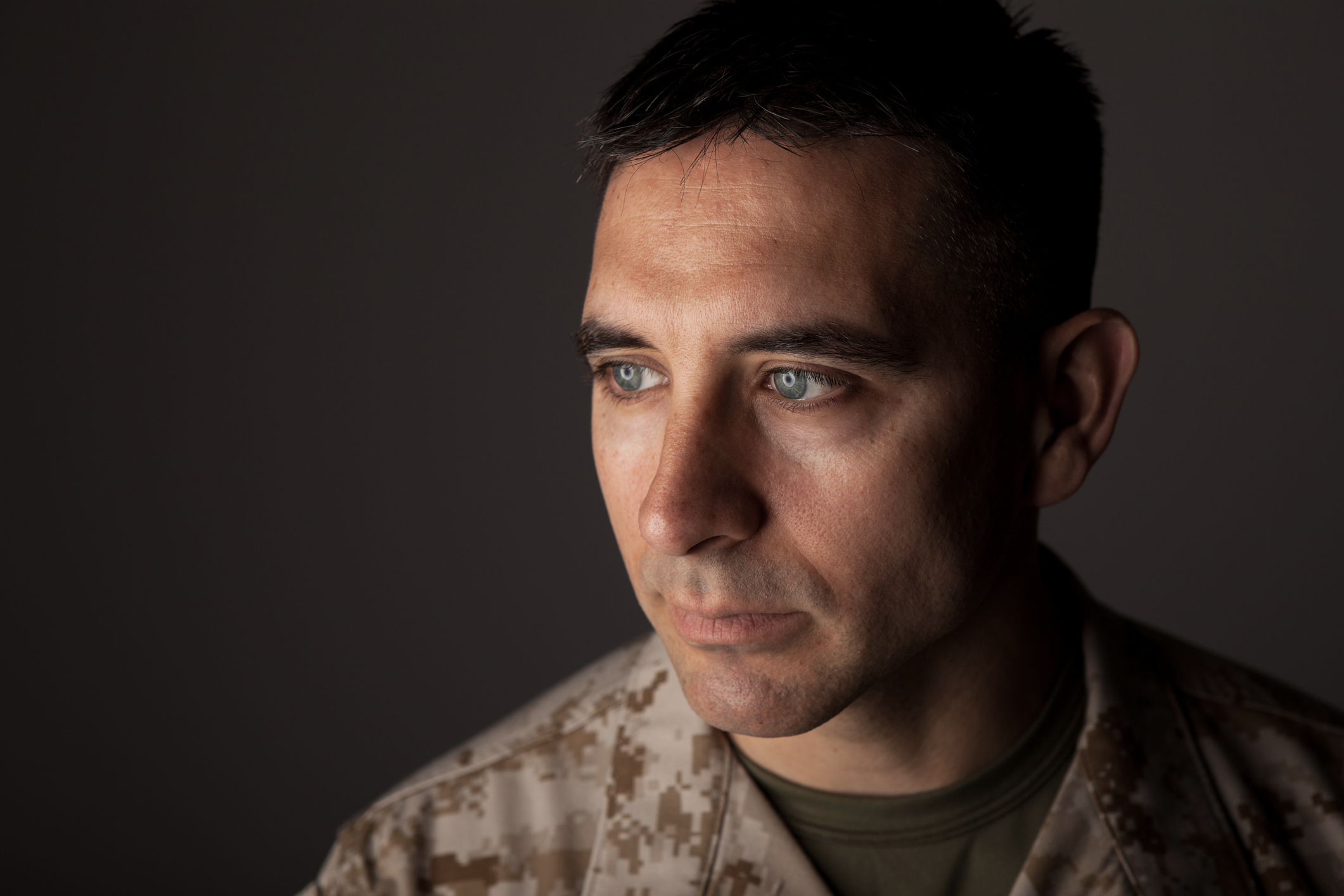WHAT WE TREAT
PTSD
Post-traumatic stress disorder (PTSD) is a mental health condition that may develop after a person is exposed to a traumatic event or experience.
During any given year, about eight million adults in the U.S. will be dealing with PTSD.
Roughly 7% to 8% of the total population will deal with PTSD at some point during their lives. This mental health concern can potentially be debilitating, but with treatment, many people are able to overcome its challenges.

What Is PTSD?
PTSD is a psychiatric disorder that has been known by many names. During World War I, affected service members were said to be suffering from “shell shock.” After the Second World War, this illness came to be known as “combat fatigue.” However, the currently used term “post-traumatic stress disorder” is more accurate, considering that anyone may potentially develop PTSD—not just military service members and veterans.
PTSD develops in response to a significantly traumatic event or experience. Roughly half of the U.S. population will experience a major trauma at some point during their lives, such as a natural disaster, accident, violent assault, or other act of violence. However, not all of them will develop PTSD. People who do develop this psychiatric disorder may experience a wide range of symptoms, such as recurrent, distressing memories; social isolation; and self-destructive behaviors.
Although the symptoms of PTSD can adversely affect quality of life and interfere with a person’s ability to function properly from day to day, there is help available. Psychiatric treatment can empower patients to overcome their mental and emotional difficulties, and heal from the trauma.
Signs and Symptoms of PTSD
It’s common for the symptoms of post-traumatic stress disorder to begin within a month of exposure to trauma. However, it’s possible for an individual to experience a delayed onset. The symptoms might not develop until years afterward. Psychiatrists categorize the symptoms of PTSD into four types.
-
Intrusive thoughts: Intrusive thoughts are repetitive, involuntary, and distressing memories or dreams. These include flashbacks of the traumatic event, which may feel as though the patient is re-living the experience.
-
Negative thoughts and feelings: Patients may suffer from ongoing guilt, shame, fear, anger, and other negative feelings. Negative thoughts may include distorted self-perceptions about themselves or others. Individuals may express hopelessness, a lack of interest in previously enjoyed activities, or emotional numbness.
-
Avoidance: Patients may resist talking about or thinking about the traumatic event. They may avoid the places, people, or objects that remind them of the trauma.
-
Arousal and reactive symptoms: People with PTSD may suffer from angry outbursts, irritability, and problems concentrating or sleeping. They may behave in self-destructive or reckless ways. Individuals might be easily startled and constantly alert for possible dangers. A car backfiring might trigger traumatic memories of combat, for example.
Children six years of age and younger may display additional symptoms, such as frequent nightmares that might not necessarily depict the trauma. Children might also use play to reenact part or all of the traumatic event.
Causes and Risk Factors of PTSD
Everyone who suffers from PTSD has directly or indirectly experienced a traumatic event. However, not everyone who encounters trauma will develop PTSD. It isn’t yet known exactly why some people develop PTSD and others do not. However, it’s believed that multiple factors may be at play, including the following:
-
How the brain regulates the hormones and chemicals that are released when exposure to trauma occurs.
-
Whether the patient has a family or personal history of mental health disorders, like depression and anxiety.
-
What the individual’s temperament, personality, and coping skills are like.
Anyone can potentially develop PTSD in response to a stressful situation, such as a serious accident, act of violence, act of sexual violence, warfare, or natural disaster. This includes very young children. However, it’s thought that certain risk factors may predispose an individual to PTSD. These risk factors can include:
-
Not having support from family and friends.
-
Having a personal history of substance use disorder, including excessive drinking.
-
Having pre-existing mental health disorders, such as anxiety or depression.
Diagnosis of PTSD
When an individual presents with possible symptoms of PTSD, a healthcare provider must first ascertain whether that individual has been exposed to trauma. It’s possible for a person to develop PTSD from an indirect exposure to trauma, such as if their loved one was harmed or killed in a violent act. PTSD can also develop in witnesses to traumatic events, and in first responders who are frequently exposed to the aftermath of these situations.
Once the healthcare provider determines the patient has been exposed to a traumatic event, he or she will likely do a physical exam to rule out other medical problems that may be causing the symptoms. Then, a psychiatric assessment may determine that the patient meets the diagnostic criteria in the Diagnostic and Statistical Manual of Mental Disorders (DSM-5). A patient may be diagnosed under these criteria if PTSD symptoms last longer than one month and interfere with the individual’s daily life, responsibilities, or relationships.
Treatment of PTSD
There are many treatments available for patients with PTSD. A mental health professional may need to try multiple approaches before identifying the best treatment for any particular patient. Sometimes, a two-pronged approach works best. This involves the use of medication and psychiatric therapy.
Medications used for PTSD patients include antidepressants and anti-anxiety medications. Some patients may also benefit from medications intended to alleviate nightmares and sleeping difficulties.
In addition to medications, or instead of medications, patients with PTSD can benefit from working with a mental health professional. Group therapy and one-on-one counseling can help individuals work through their difficult emotions and acquire effective coping skills. Specific therapy techniques may include cognitive processing therapy (to modify negative emotions) and prolonged exposure therapy (to empower people to face their triggers and gain control of them).
When to Call a Doctor
PTSD can sometimes lead to thoughts of suicide or self-destructive behaviors. If you have PTSD and you begin experiencing these thoughts or behaviors, call 911 right away to get the help you need. If your friend or family member has PTSD, keep an eye out for worrisome red flags, such as talk of self-harm. Don’t hesitate to call 911 if you think your loved one may be in danger, and stay with them until help arrives. In addition, individuals with PTSD may wish to call the National Suicide Prevention Lifeline at 1-800-273-TALK (1-800-273-8255) for immediate counseling.
Individuals who are suffering from any symptoms of PTSD can reach out to their doctors or psychiatrists at any time for help. The sooner treatment has begun the sooner the patient will begin to feel more in control of his or her thoughts and behaviors.
If this is a medical emergency, please call 911. For mental health emergencies, call 988.
Feeling better starts here
Virtual care is a convenient and private way to receive treatment for PTSD by phone (where permitted) or video, in as few as 72 hours.

Therapy, made simple.
Connect with a licensed medical provider, psychiatrist, or therapist on your schedule.